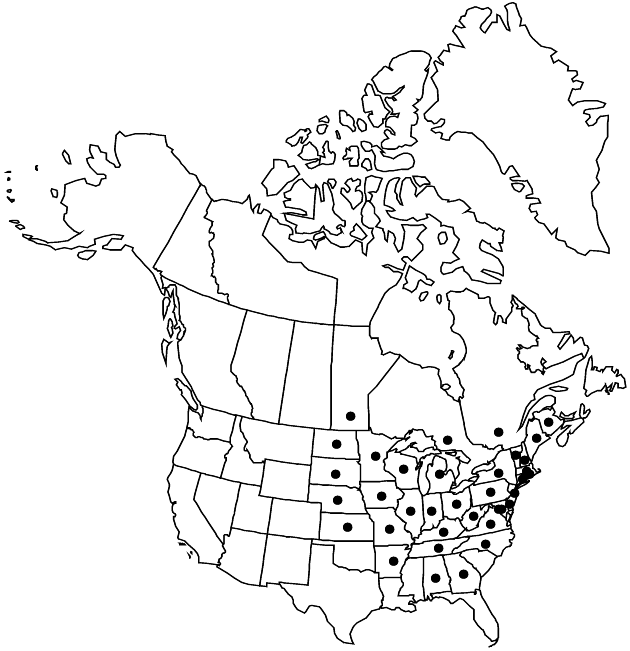Leaves lanceolate to ovate, conspicuously auriculate-clasping, less than 5 times as long as wide. Phyllaries strongly unequal, apical green zones diamond-shaped. 2n = 48.
Phenology: Flowering (Jul–)Aug–Oct.
Habitat: Open, dry habitats, mixed- and tallgrass prairies, open, dry oak and other deciduous forests, glades and alvars, roadsides
Elevation: 0–1000+ m
Distribution

Man., N.B., Ont., Que., Ala., Ark., Conn., Del., D.C., Ga., Ill., Ind., Iowa, Kans., Ky., Maine, Md., Mass., Mich., Minn., Mo., Nebr., N.H., N.J., N.Y., N.C., N.Dak., Ohio, Pa., R.I., S.Dak., Tenn., Vt., Va., W.Va., Wis., introduced in Mexico, West Indies, Central America, South America, Europe.
Discussion
Variety laeve is found in the tallgrass prairies area and midwestern deciduous forest, mainly west of the Appalachian Mountains, but reaching the Atlantic from New Jersey to New England. It was introduced in Quebec and New Brunswick; it is also widely introduced outside North America. It is sold in the horticultural trade. Aster laevis forma beckwithiae House is a white-rayed phenotype that is not recognized here.
Hybrids of this variety have been reported with Symphyotrichum ciliolatum, S. cordifolium, S. drummondii, S. lanceolatum, S. lateriflorum, S. oolentangiense, and S. urophyllum. The hybrid with S. praealtum was described as Aster novi-belgii Linnaeus var. litoreus A. Gray [S. novi-belgii var. litoreum (A. Gray) G. L. Nesom; J. Labrecque and L. Brouillet 1996]. Symphyotrichum ×versicolor (Willdenow) G. L. Nesom (Aster versicolor Willdenow) is the hybrid between S. laeve var. laeve and S. novi-belgii var. novi-belgii. It is of garden origin and has escaped locally in Europe but has not been reported in North America.
Symphyotrichum ×gravesii (E. S. Burgess) G. L. Nesom (Aster gravesii E. S. Burgess), originally reported from Connecticut, may be the hybrid between S. laeve var. laeve and S. dumosum, though annotations suggest that the second parent might be S. cordifolium. Symphyotrichum ×woldenii (Rydberg) G. L. Nesom (Aster woldenii Rydberg), initially reported from Iowa, is possibly the hybrid between S. laeve var. laeve and S. praealtum, or S. oolentangiense and S. praealtum. The question of exact parentage is unresolved.
Distinction between var. laeve and var. geyeri is based on phyllary morphology. The two varieties appear to intergrade in the northeastern prairies but are mostly well defined at the extremes of the range, though plants in the western United States sometimes appear similar to var. laeve. These varieties are much more similar to each other than either is to var. concinnum or var. purpuratum and should be grouped in subsp. laeve. Alternately, var. geyeri could be considered a synonym of var. laeve.
Selected References
None.